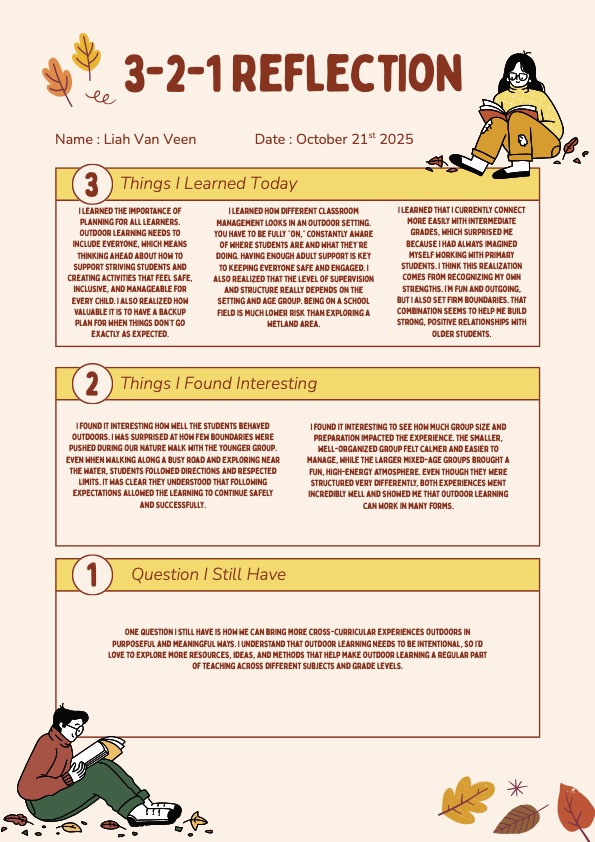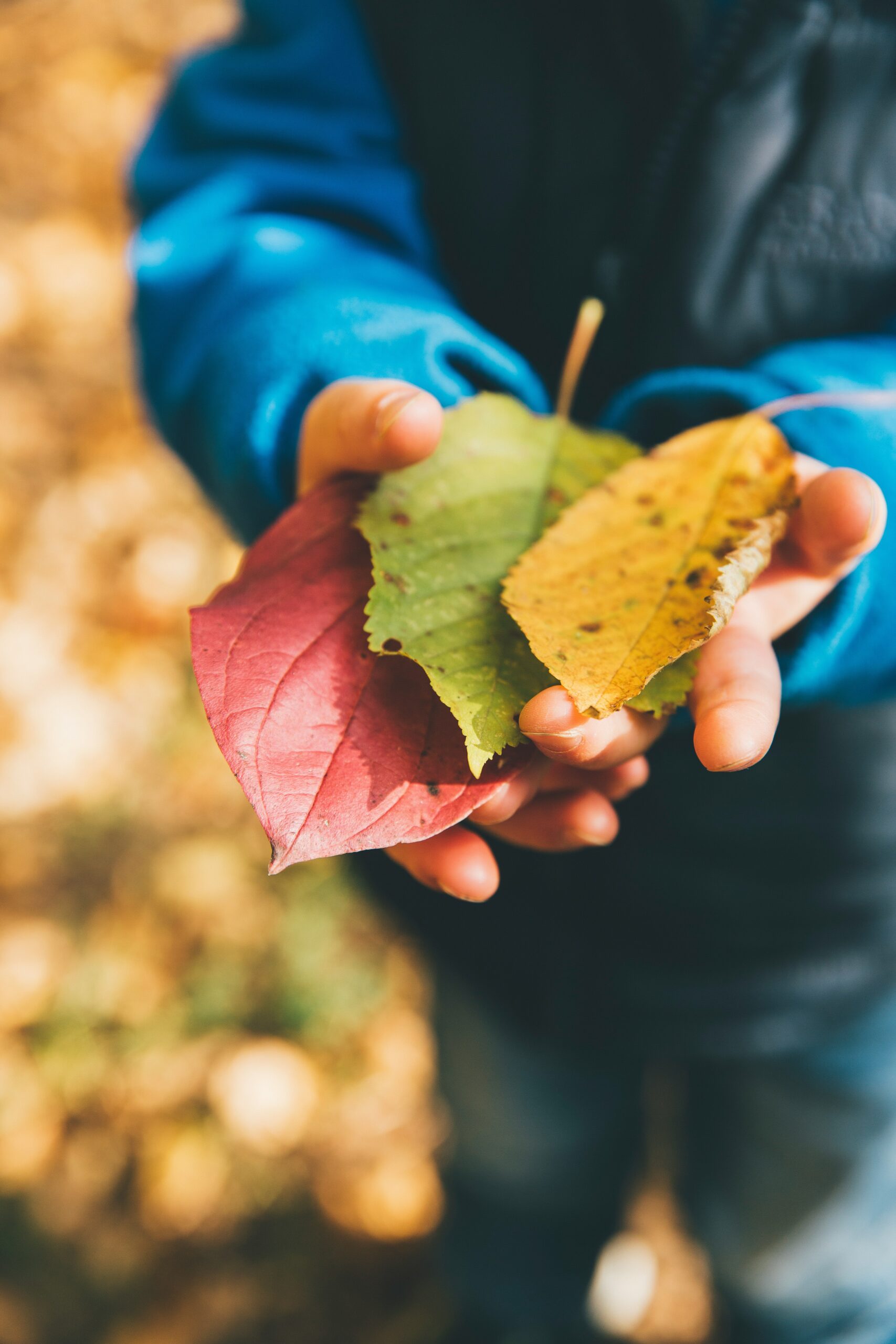This week, our cohort had the opportunity to participate in two very different Take Me Outside Day experiences at two local schools. Both days gave me a better understanding of outdoor learning, classroom management, and how group size and preparation can shape the outcome of a lesson.
At the first school, we worked with three larger, mixed-age groups who participated in different activity stations based on the I Love a Challenge physical education idea. The classes were supposed to have already done a story walk of The OK Book by Amy Krouse Rosenthal, but only some had, which made it a bit tricky to connect our activities to the story the way we’d planned. We started with the youngest group and finished with the oldest, but looking back, I think starting with the older students might have helped us feel more prepared for the younger ones. For me personally, I found it easier to explain, organize, and redirect the older groups, though I could see that some of the other teacher candidates felt more comfortable working with the younger students. Even though things felt a little chaotic at first, the students were engaged and genuinely excited to explore through movement and teamwork. As Lipton and Wellman explain in “Phase Two: Exploring and Discovering” from Pathways to Understanding( Pg.12), students naturally sort through and make sense of new material by engaging with it and with one another. They build connections between what they already know and the new ideas they’re encountering, expanding their understanding as they go. This really connects to the I Love a Challenge concept and the idea of “leveling up,” where students push themselves to build on what they’ve already learned.
In contrast, the second school had a much calmer and more focused atmosphere. We worked two-on-two with students from a single class who had already read Leaf Man by Lois Ehlert and were ready to build on that learning. We went for a walk to a nearby wetland, did a nature scavenger hunt, collected leaves and sticks, and created our own “Leaf Man.” Using school iPads, we took photos of our creations and then explored Ktunaxa words for some of the items we found through the First Voices website. Ktunaxa is the language spoken by local Indigenous Peoples, and I think it’s so important to incorporate Indigenous learning into the classroom whenever possible. Back in the classroom, we used ChatterPix Kids to make our Leaf Man talk and played around with filters. The students absolutely loved it. The smaller group size and strong preparation made it much easier to connect, and the kids were fully engaged from start to finish.
Comparing the two experiences, the biggest differences for me were the group size, preparation level, and overall energy. The first day felt fast-paced and required a lot of quick thinking and flexibility, while the second was more structured and gave me the chance to slow down and connect with students on a deeper level. Both taught me something valuable: how to adapt when things don’t go as planned, and how preparation and structure can create more connected, hands-on learning experiences.
I felt confident in both settings, but I definitely felt more connected to the students in the second experience. I learned that I adapt quickly and can think on my feet when things don’t go exactly as planned. I also realized that while I initially thought I wanted to work with primary students, the more time I spend in these in-situ experiences, the more I find myself drawn to intermediate or middle school students. Communication and preparation with classroom teachers make a big difference, especially when a large group of student teachers enters the environment. It can be overwhelming for younger students, but both groups handled it great and responded really well to learning outdoors.
I think learning outdoors is such a valuable opportunity for students. They seem more relaxed, curious, and ready to explore. The change of environment sparks excitement, and that excitement often translates into better listening and stronger engagement. I noticed how motivated they were to respect boundaries and stay focused because they were happy to be learning outside.
These experiences could easily extend into other subjects: art, writing, science, or social studies. Students could reflect on their outdoor learning through journal entries or creative writing, create nature art, or connect their experiences to local ecosystems or history.

Overall, both days reminded me of how flexible and adaptable teaching really is. No matter the size of the group or how well-prepared the class is, what matters most is being present, connected, and ready to adjust. Watching students learn outdoors reminded me that education isn’t just about content; it’s also about curiosity, creativity, and connection.

Sorry, but comments are not enabled on this site.